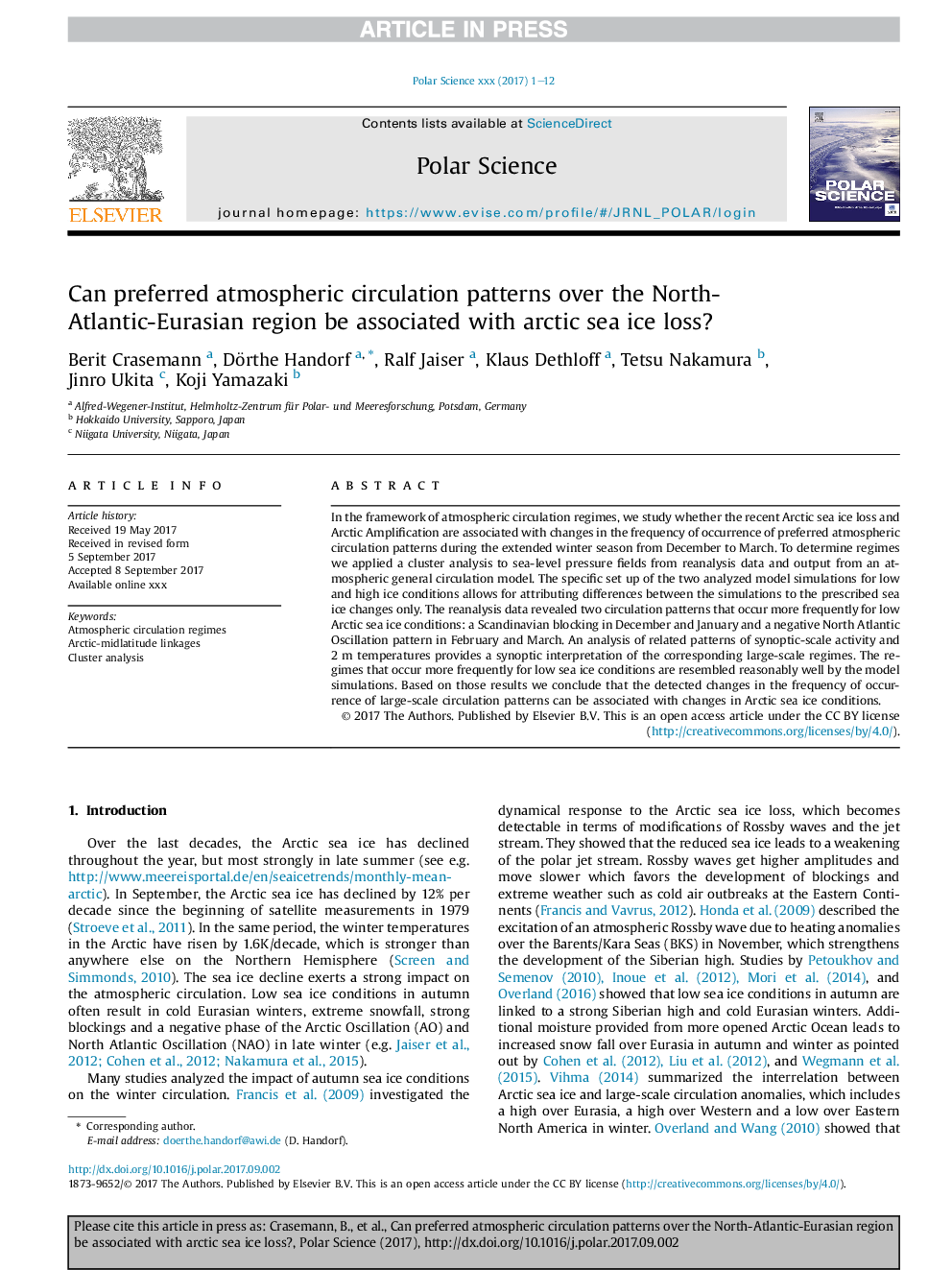| Article ID | Journal | Published Year | Pages | File Type |
|---|---|---|---|---|
| 8907825 | Polar Science | 2017 | 12 Pages |
Abstract
In the framework of atmospheric circulation regimes, we study whether the recent Arctic sea ice loss and Arctic Amplification are associated with changes in the frequency of occurrence of preferred atmospheric circulation patterns during the extended winter season from December to March. To determine regimes we applied a cluster analysis to sea-level pressure fields from reanalysis data and output from an atmospheric general circulation model. The specific set up of the two analyzed model simulations for low and high ice conditions allows for attributing differences between the simulations to the prescribed sea ice changes only. The reanalysis data revealed two circulation patterns that occur more frequently for low Arctic sea ice conditions: a Scandinavian blocking in December and January and a negative North Atlantic Oscillation pattern in February and March. An analysis of related patterns of synoptic-scale activity and 2Â m temperatures provides a synoptic interpretation of the corresponding large-scale regimes. The regimes that occur more frequently for low sea ice conditions are resembled reasonably well by the model simulations. Based on those results we conclude that the detected changes in the frequency of occurrence of large-scale circulation patterns can be associated with changes in Arctic sea ice conditions.
Keywords
Related Topics
Physical Sciences and Engineering
Earth and Planetary Sciences
Earth and Planetary Sciences (General)
Authors
Berit Crasemann, Dörthe Handorf, Ralf Jaiser, Klaus Dethloff, Tetsu Nakamura, Jinro Ukita, Koji Yamazaki,
